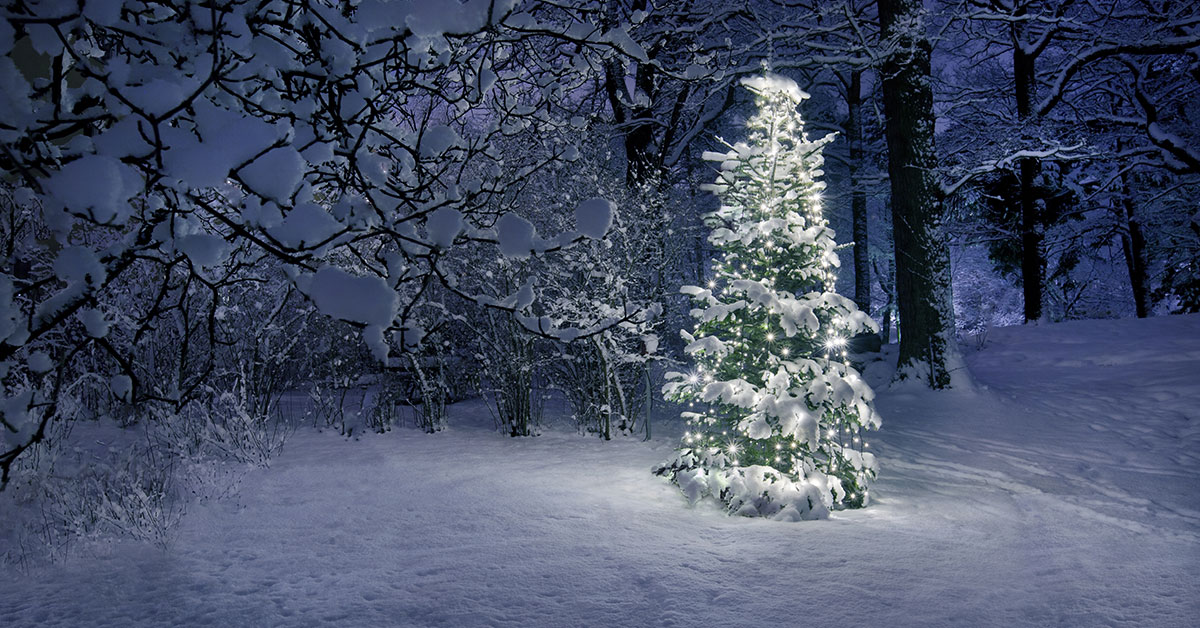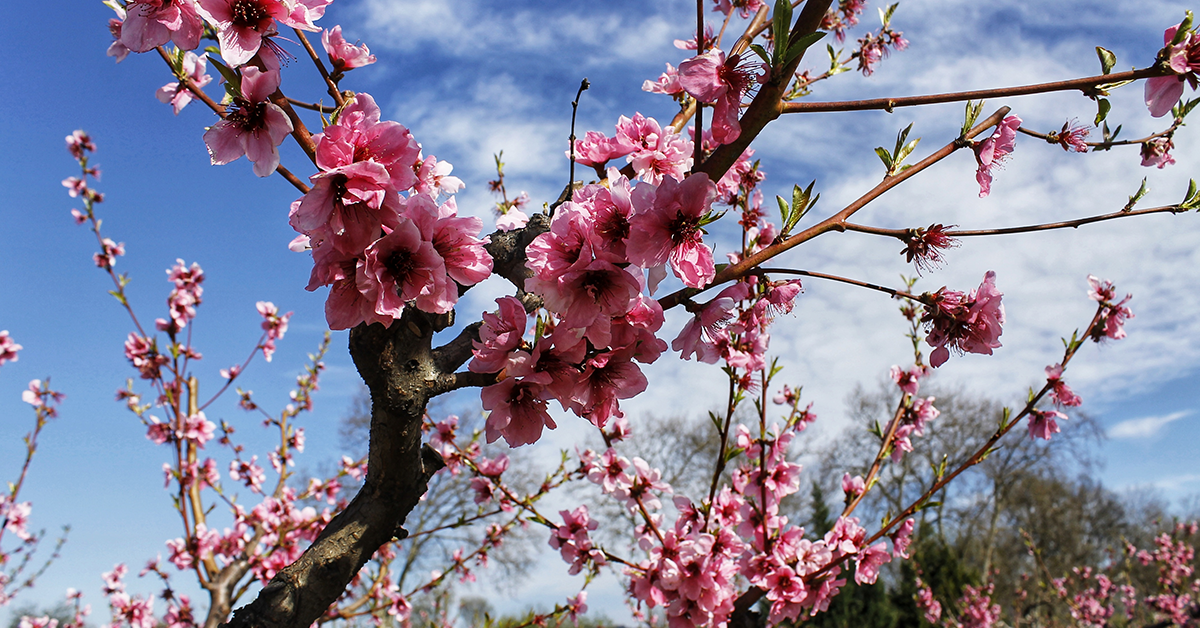Christmas is one of my favorite times of year. The decorations and gift-giving are great and all, but I have an almost spiritual connection to the concept of a Christmas tree. Seeing a live Christmas tree really lifts my spirits and makes me think back to countless generations before me participating in this tradition. Recently, I decided to plant and grow my own Christmas tree. I wanted to take a moment to talk about how to grow a Christmas tree at home, what kind of tree to get, how long it’ll take to grow, and general care.
Benefits of growing your own Christmas tree
Growing a Christmas tree at your home has a number of perks. First and foremost, you’ll save money! A live Christmas tree will cost you between $75 and $225 on average, which can definitely add up year after year. Growing your own Christmas tree will save you a bit of cash during the holidays.
Having an outdoor Christmas tree to decorate also connects you with the Pagan roots of the tradition and will likely be viewed by your neighbors as some outside-the-box thinking. And who doesn’t want to impress the neighborhood?
Lastly, by keeping your Christmas tree planted in the ground all year long, it will continue to absorb carbon dioxide, produce the oxygen we breath, create shade for our yards, and serve as habitat for birds and other types of wildlife. Your Christmas tree can give back to the world 24/7/365.
The best types of trees for Christmas trees
Picking the right type of tree for growing a Christmas tree is important as it determines the quality of the tree and how well it will grow in your particular climate. Different tree species have varying growth habits, such as how tall and wide they grow, as well as how well they tolerate certain environmental conditions.
By selecting the appropriate tree species, you can ensure that your Christmas tree will thrive, look beautiful, and provide joy for many holiday seasons to come. These are some types of pine trees that I recommend for Christmas tree growing:
Balsam Fir
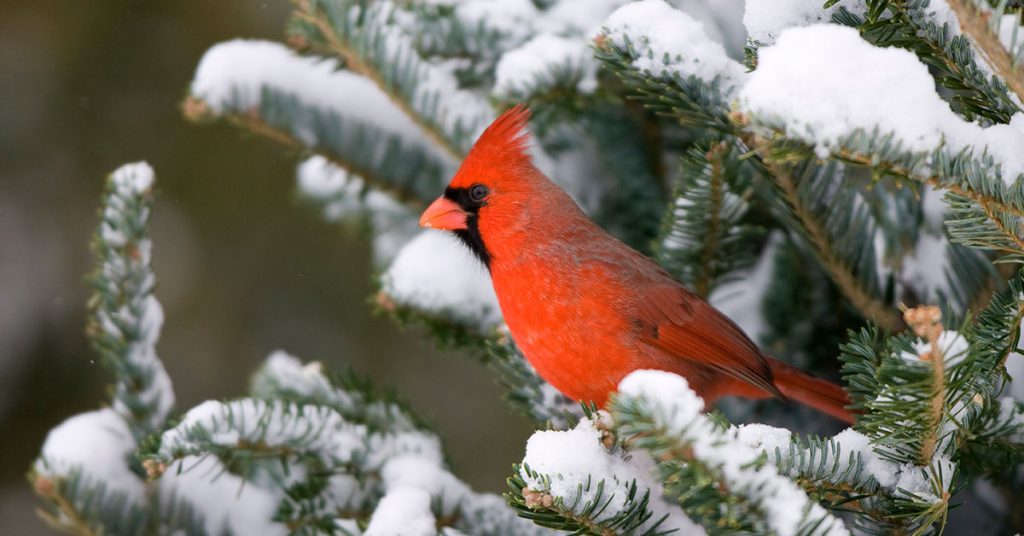
Balsam firs are popular Christmas trees for several reasons. They have a classic conical shape and dense foliage, which make them ideal for hanging ornaments and other decorations. Additionally, they have a pleasant aroma that can fill a room with the scent of Christmas.
Balsam firs are also known for their excellent needle retention, meaning they won’t shed their needles easily, making them a great option for families with young children or pets. These trees also have a longer lifespan than some other types of Christmas trees, so they can stay fresh and green throughout the holiday season.
Perhaps most importantly, Balsam firs have sturdy branches that can support heavier ornaments, making them a great choice for those who like to decorate their tree with lots of ornaments and lights.
Douglas Fir
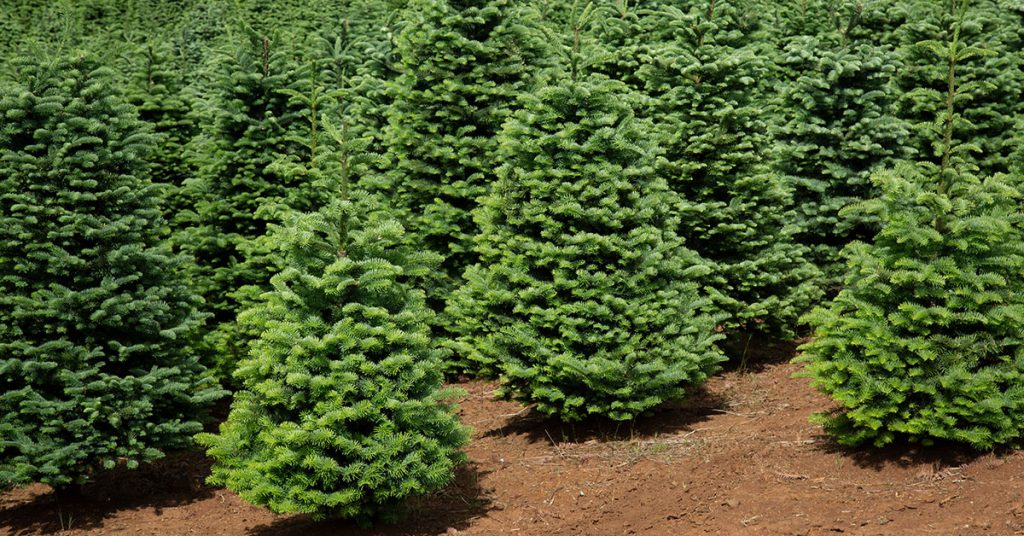
Douglas Firs (Pseudotsuga menziesii) are a common species for Christmas trees because of their pyramid shape, soft needles, and pleasant fragrance. They are native to western North America and can grow up to 330 feet tall in the wild, but the varieties grown for Christmas trees typically reach a maximum height of around 80 feet. Douglas firs are a good choice if you want to grow a gigantic Christmas tree that will dazzle the neighborhood!
Douglas Firs have soft, dark green needles that are about 1 inch long and grow in a spiral pattern around the branches, giving the tree a full appearance. The needles are also relatively long-lasting, which makes them ideal for use as a Christmas tree.
Additionally, Douglas Firs have a sweet fragrance that adds to their appeal as a holiday decoration. They are also known for being resilient, able to withstand harsh winter weather and continue growing for many years, making them a good choice for those who want to plant their Christmas tree in their yard after the holidays.
Fraser Fir
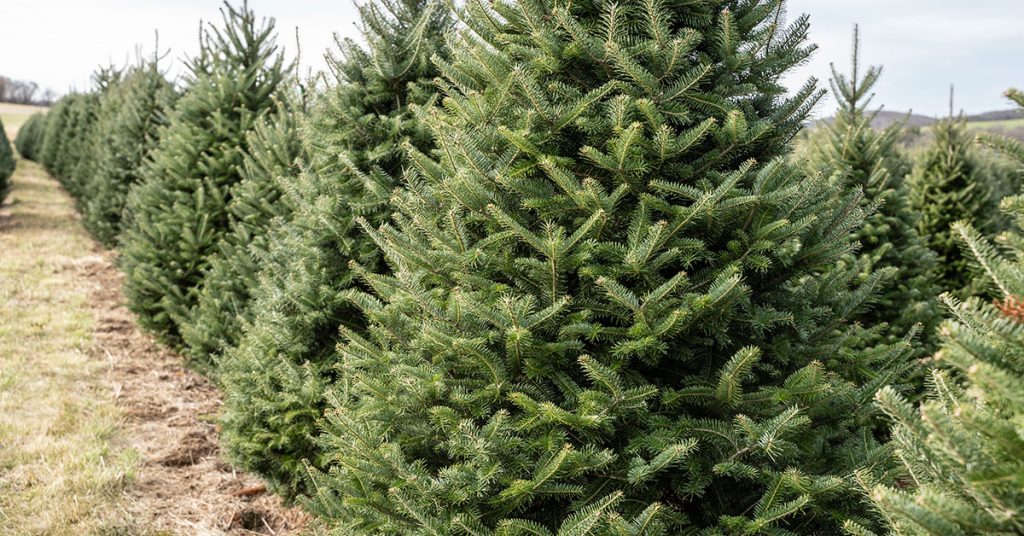
Fraser firs are one of the most popular choices for Christmas trees due to their numerous desirable qualities. These trees have soft, dense needles that are about an inch long, with a silvery underside that adds to their aesthetic appeal.
They also have strong branches that can hold heavy ornaments without sagging. Fraser firs are known for their excellent needle retention, meaning they are less likely to shed needles and make a mess in your home. In addition, they have a pleasant scent that adds to the festive atmosphere.
Fraser firs are native to the Appalachian Mountains of the eastern United States and are often grown on Christmas tree farms throughout the country. They prefer well-drained soil and cool temperatures, making them well-suited for temperate regions.
Noble Fir
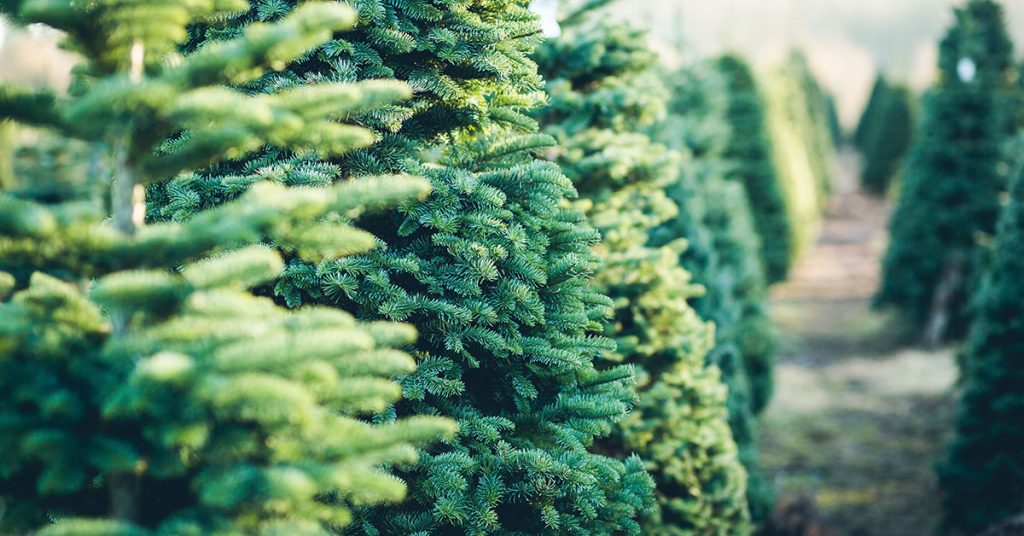
Noble firs are a good for Christmas trees due to their elegant appearance and excellent needle retention. The needles of the Noble fir are bluish-green in color and grow in a spiral pattern on the branches.
The branches are sturdy, allowing for the tree to hold heavy ornaments without drooping. The Noble fir has a pleasant aroma and retains its needles well, even when the tree is cut and placed indoors. This makes it a great choice for those who want a tree that will last throughout the holiday season without shedding needles all over the house.
The Noble fir is native to the Pacific Northwest region of the United States and is often grown on tree farms for use as Christmas trees.
Colorado Blue Spruce
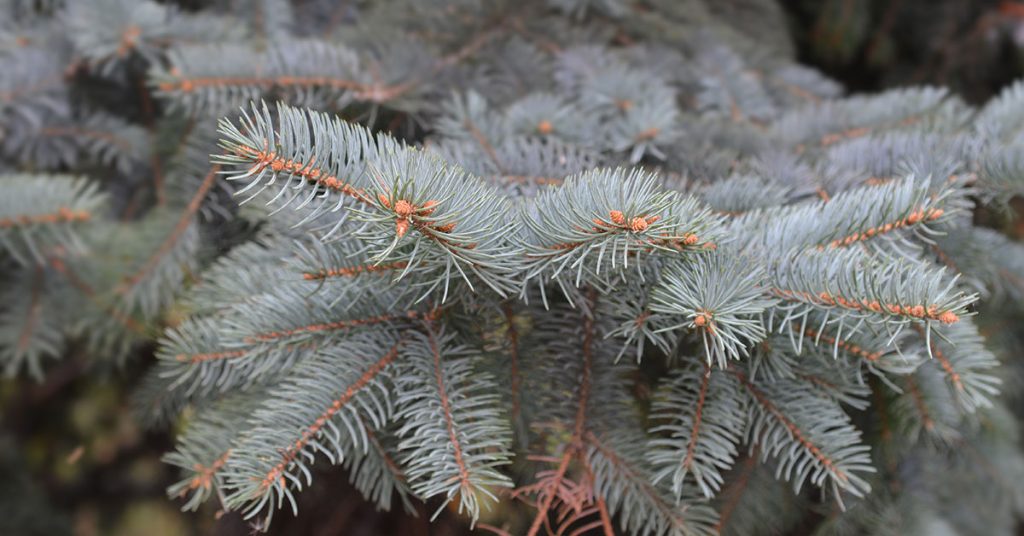
Colorado blue spruce (Picea pungens) is another good choice for Christmas trees because of its unique blue-gray color and symmetrical shape. This type of tree is my personal choice when growing a Christmas tree at home. It is native to the Rocky Mountains of Colorado and can grow up to 75 feet tall in the wild, although the trees used for Christmas trees are usually much smaller.
The needles of Colorado blue spruce are sharp and stiff, making them perfect for holding heavy ornaments. Additionally, the branches are strong and can hold up even the heaviest of decorations.
Colorado blue spruce is also known for its pleasant fragrance, which can fill a room with its fresh, piney scent. With its striking appearance and sturdy branches, Colorado blue spruce is a great choice for those who want a traditional, yet unique Christmas tree.
Virginia Pine
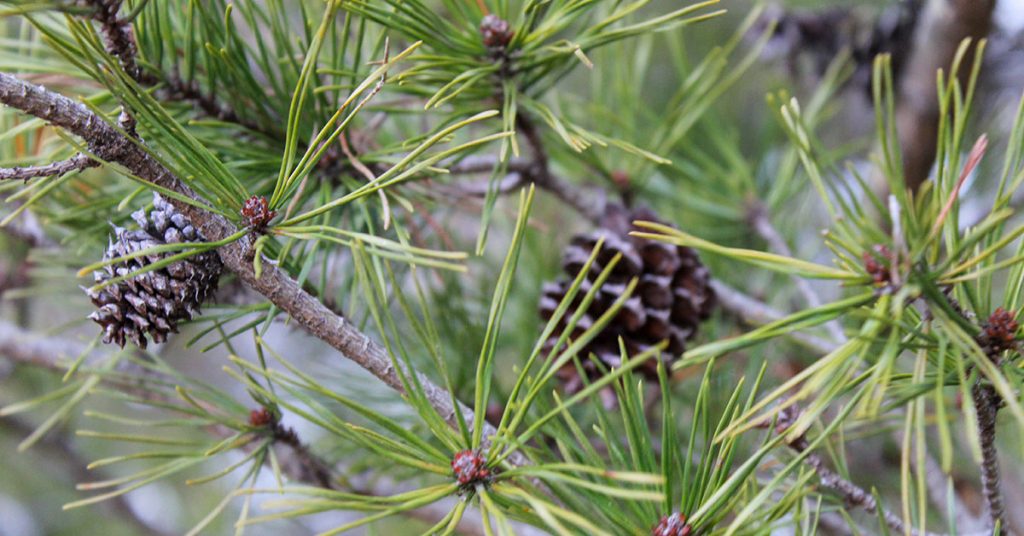
Virginia Pine (Pinus virginiana) is a popular Christmas tree species in the southeastern United States due to its sturdy branches, and pleasant pine scent, but it isn’t generally used as a “classic” cone-shaped Christmas tree. Virginia pines have a classic Christmas tree shape, with dense foliage that ranges in color from a blue-green to a bright green. They typically grow to about 20-40 feet tall and are well-suited for outdoor landscapes or larger indoor spaces.
One of the most significant benefits of Virginia Pines as Christmas trees is their resilience. They are tolerant of various soil types and can withstand droughts and harsh weather conditions, which make them suitable for growing in different regions of the southeastern United States. They also have an excellent needle retention ability, meaning they do not shed their needles as quickly as other species.
Virginia Pines grow relatively quickly, with an average of 2-3 feet per year, making them a popular choice for Christmas tree farmers. They are also relatively low-maintenance and can thrive in a variety of soil types, including sandy or clay soils.
Planting your tree
Evergreen trees used as Christmas trees are hardy and don’t ask much of us. They like to be planted in full sun and well drained soil. If you’re planning to plant more than one tree, it’s best that you plant them about 8 feet apart from one another so they don’t crowd each other. Follow any and all instructions when planting the particular type of tree you’ve selected for your property.
How long does it take to grow a Christmas tree?
Here’s where things get a little tricky. Trees take time to grow, and that includes our beloved Christmas trees. For example, once established, a Douglas fir tree will add about 13 to 24 inches every year. If you start with a very small tree, it’ll take a few years before you have a Christmas tree that doesn’t look like something out of Charlie Brown. What I did to get around this was spend a little bit more money on a tree that was already pretty tall, about 5 feet tall once planted in the ground.
Eventually, if you don’t stay on top of pruning your tree to maintain its size, your Christmas tree will probably become a little bit too big to realistically decorate top to bottom. If you do prune it, be sure to do so during its dormant time in the winter. Pruning the top branch of the tree, or “leader,” will encourage the tree to grow more bushy. Douglas firs aren’t hard to keep maintained and a certain height, you just need to be diligent and stay on top of it.
Keep reading: What to do when grass won’t grow under trees
